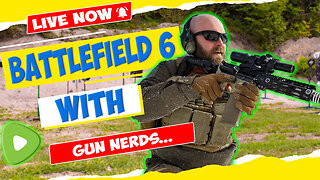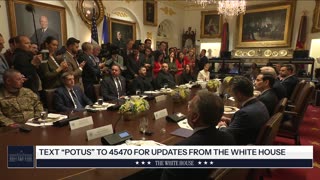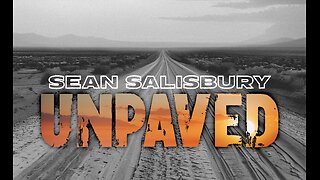Premium Only Content

Remnant 2 Tech Analysis on Xbox Series S/X and PS5 - Unreal 5 Nanite and 4K
Analysis of performance and image quality of Remnant 2 on Xbox Series S/X and PS5.
Index:
Intro 00:00
Frame Rate 00:09
Resolution 02:14
Shadows 06:06
Frame Rate 08:19
Reflections 10:24
Textures 12:37
Frame Rate 14:51
Loading 16:56
Xbox Series S Tech Specs 17:26
Xbox Series X Tech Specs 17:36
PS5 Tech Specs 17:46
Technical dictionary:
- AMD FidelityFX™ Super Resolution (FSR):
FidelityFX Super Resolution (FSR) is used to upsample an input image into a higher resolution. There are two versions of FSR with distinctive upscaling technique and image quality.
FSR 1 is a spatial upscaler based on the Lanczos algorithm* requiring an anti aliased lower resolution image.
FSR 2 and 2.1 is a temporal upscaler based on a modified Lanczos* requiring an aliased lower resolution image and utilising the temporal data (such as motion vectors and frame history) and then applies its own anti aliasing pass which replaces the game's temporal anti-aliasing solution.
Quality Preset Scale Factor Render Scale
Performance 2.0x 50.0% (e.g. for 4k: 1080p upscale to 2160p with FSR)
Balanced 1.7x 58.8% (e.g. for 4k: 1270p upscale to 2160p with FSR)
Quality 1.5x 66.6% (e.g. for 4k: 1440p upscale to 2160p with FSR)
* The Lanczos algorithm is an iterative algorithm invented by Cornelius Lanczos that is an adaptation of power methods to find eigenvalues and eigenvectors of a square matrix or the singular value decomposition of a rectangular matrix. It is particularly useful for finding decompositions of very large sparse matrices.
- Cube Mapping Reflections:
A Cubemap is a collection of six square textures that represent the reflections on an environment. The six squares form the faces of an imaginary cube that surrounds an object; each face represents the view along the directions of the world axes (up, down, left, right, forward and back). Cubemaps are often used to capture reflections or “surroundings” of objects; for example skyboxes and environment reflections often use cubemaps.
- Screen Space Reflections (SSR):
Screen space reflections (SSR): a more expensive technique that traces reflection rays in screen space (as opposed to world space in e.g. ray tracing). This is done for each rendered pixel of the reflected surface, using the surface normal and scene depth.
The disadvantage is that objects not captured in the rendered frame cannot appear in the reflections, which results in unresolved intersections and incomplete reflection image.
- Ray-Traced Reflections
Ray-Traced Reflections is a more accurate ray-traced solution to Screen Space Reflection technique (that traces reflection rays in screen space), ray tracing traces reflection rays in world space.
The disadvantage of the technique using ray tracing is the need for a dedicated hardware for accelerating the calculations needed to perform the feature.
- Shadow Mapping
Shadow mapping or shadowing projection is a process by which shadows are added to 3D computer graphics. This concept was introduced by Lance Williams in 1978, in a paper entitled "Casting curved shadows on curved surfaces."[1] Since then, it has been used both in pre-rendered and realtime scenes in many console and PC games. Shadows are created by testing whether a pixel is visible from the light source, by comparing the pixel to a z-buffer or depth image of the light source's view, stored in the form of a texture.
- Simple Shadow Mapping
Simplest possible implementation of Shadow Mapping, without any smoothing or additional features.
- Soft Shadows Mapping
Soft shadows are typically rendered in games by using shadow mapping and Percentage Closer Filtering with a uniform kernel size. The Percentage-Closer Soft Shadows (PCSS) algorithm computes a variable kernel size based on the distance between the relative position of the receiver point, an approximation of the blocker, and the area light.
- Ray-traced Shadows
Ray-traced shadows are generated by tracing the path of rays sampled from a light source. Ray-traced shadows are more accurate than shadow-mapped shadows. All ray-traced shadows are world space shadows.
- Unreal Engine 5 Nanite
Nanite is Unreal Engine 5's virtualized geometry system which uses a new internal mesh format and rendering technology to render pixel scale detail and high object counts. It intelligently does work on only the detail that can be perceived and no more. Nanite's data format is also highly compressed, and supports fine-grained streaming with automatic level of detail.
- Unreal Engine 5 Virtual Shadow Maps
Virtual Shadow Maps (VSMs) is the new shadow mapping method used to deliver consistent, high-resolution shadowing that works with film-quality assets and large, dynamically lit open worlds using Unreal Engine 5's Nanite Virtualized Geometry, Lumen Global Illumination and Reflections, and World Partition features.
-
 1:03:29
1:03:29
DeVory Darkins
2 hours ago $21.77 earnedKash Patel drops DEVASTATING NEWS for Democrats as ANTIFA suffers MAJOR LEGAL BLOW
54.6K58 -
 LIVE
LIVE
Jeff Ahern
49 minutes agoFriday Freak out with Jeff Ahern
154 watching -
 1:14:56
1:14:56
Lara Logan
13 hours agoTHE ONLYFANS SCAM: Victoria Sinis Breaks Down the Dangers and Lies Targeting Your Children | EP 40
24K6 -
 3:02:51
3:02:51
Tundra Tactical
21 hours ago $0.28 earned{LIVE NOW} GunTuber Plays Battlefield 6...Terribly
8143 -
 40:50
40:50
The White House
2 hours agoPresident Trump Participates in a Bilateral Lunch with the President of Ukraine
11K19 -
 54:57
54:57
Sean Unpaved
3 hours agoRodgers-Flacco TNF Showdown, CFB Week 8 Upsets, NFL Week 7 Edges, & Weekend Locks
15.9K -
 2:05:45
2:05:45
The Culture War with Tim Pool
23 hours agoWokeness Is Dying, Conservatives Are Winning & Taking Back Entertainment | The Culture War Podcast
137K61 -
 1:57:51
1:57:51
The Charlie Kirk Show
3 hours agoZelenskyy Gets to Know the King + Bolton Busted + NYC Showdown + AMA | Davis, McCoy | 10.17.2025
51.9K17 -
 16:19
16:19
Neil McCoy-Ward
2 hours ago🚨 More Bank COLLAPSES Are On The Way... (AVOID These Banks!)
4.07K1 -
 2:07:06
2:07:06
Side Scrollers Podcast
4 hours agoDiaper Furry Streamer Gets ONLY ONE DAY Suspension + Hasan PLAYS VICTIM + More | Side Scrollers
17.1K6